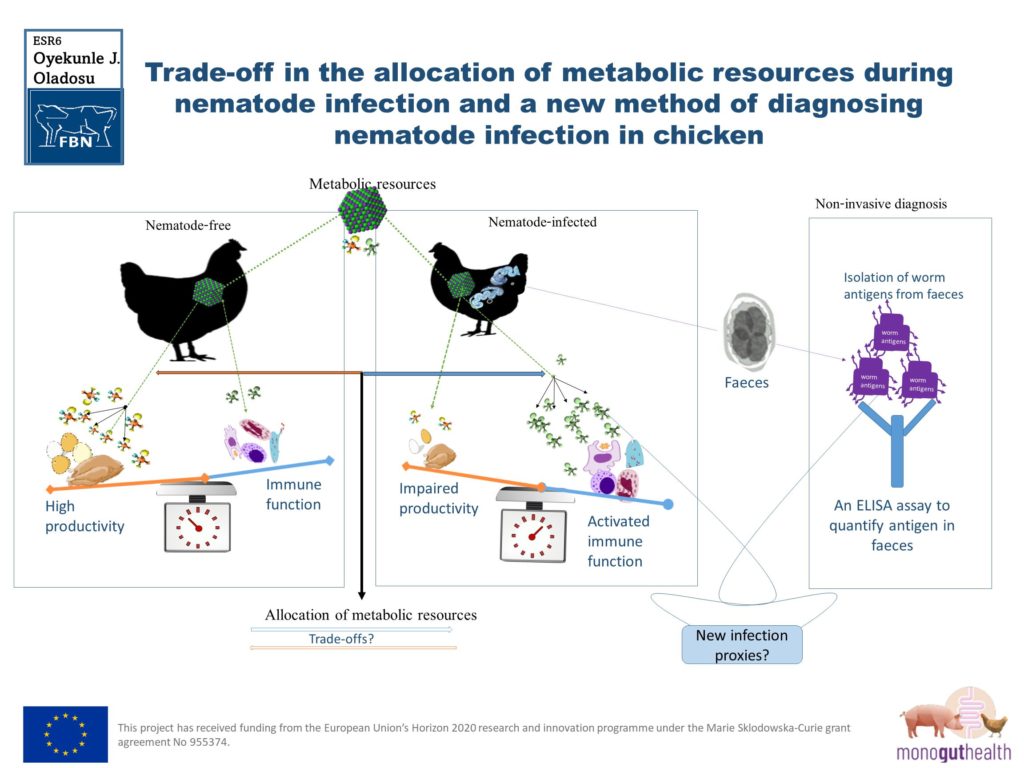ESR6: Characterisation of metabolic responses in chickens exposed to nematode infections
Background
Ascaridia galli and Heterakis gallinarum are the two most important gastrointestinal-nematodeParasitic worms with long narrow and threadlike bodies that reside in the gut of an host animal. The… species, challenging the health and welfare of chickens. They impair host performance through reduced feed intake and lower feed conversion efficiency. However, infected chickens can expel vast majority of worms through humoral and local immune responses. Previous data indicate that there might be trade-offs in allocating metabolic resources between defense and performance functions in high performing chickens exposed to pathogenic challenges.
Objectives
Characterize nematode infections in details that may lead to development of a non-invasive diagnostic tool.
Investigate whether and to what extent a trade-off in prioritization of metabolically essential resources between immune functions and performance takes place in nematode-infected chickens.
Identify novel metabolic proxies with key roles in exchange between defense and performance following exposure to gastrointestinal nematodesParasitic worms with long narrow and threadlike bodies that reside in the gut of an host animal. The...
Methods
Plasma and tissue samples from laying hens infected with ascarids will serve as the materials to be examined.
Nematode infections will be characterized in detail with actual worm burdens (gold standard) and indirect infection proxies. A special focus will be given on the suitability of worm antigens in host feces to develop a diagnostic tool.
Analysis of plasma samples will be performed to determine concentrations of amino acids and metabolites representing energy, protein and lipid metabolismChemical processes that occur within a living organism in order to maintain life. .
Metabolomics analysis on tissue samples will be carried out to investigate how metabolic alterations in the host animal are related with infections in order to identify novel metabolic proxies with key roles in exchange between defense and performance parameters.
Expected results
Results generated from this project are expected to elucidate whether a trade-off in prioritization of metabolically essential resources between immune functions and performance parameters occurs in nematode infected chickens (D3.1).
Furthermore, certain (novel) metabolites that can serve as a proxy of infections maybe identified (D3.3).
Planned secondments
- At: TECOdevelopment (2 mo); Training in development of ELISAs of veterinary importance;
- At: AU (3 mo); Training in metabolomics studies;
- At: PBS (1 mo); Perform an in ovo pre- and/or probiotics supplementation trial combined with an LPS/pathogen challenge and assess physiological responses.
Links to other ESRs or WP
Enrolment in Doctoral degree:
ESR6 will either be enrolled at the Faculty of Veterinary Medicine, Free University of Berlin
Supervisors
Gürbüz Daş (FBN), Nadia Everaert (KU Leuven)
